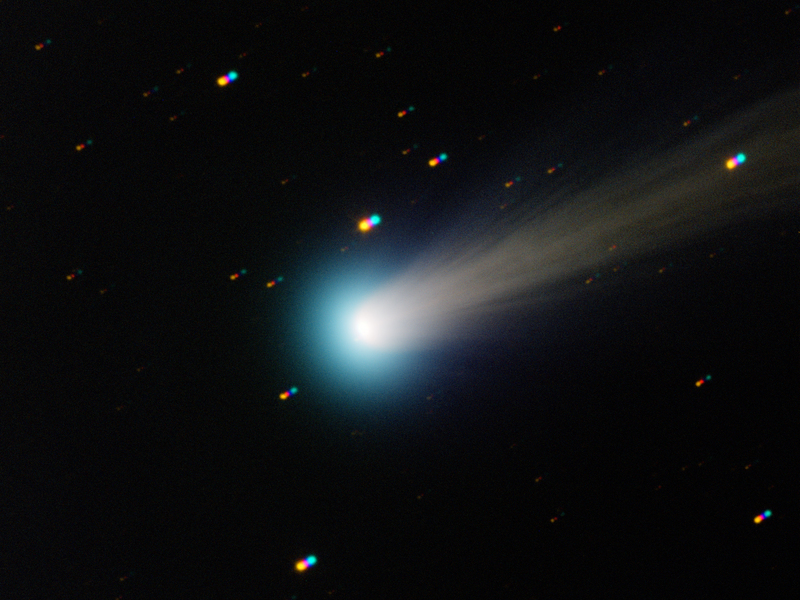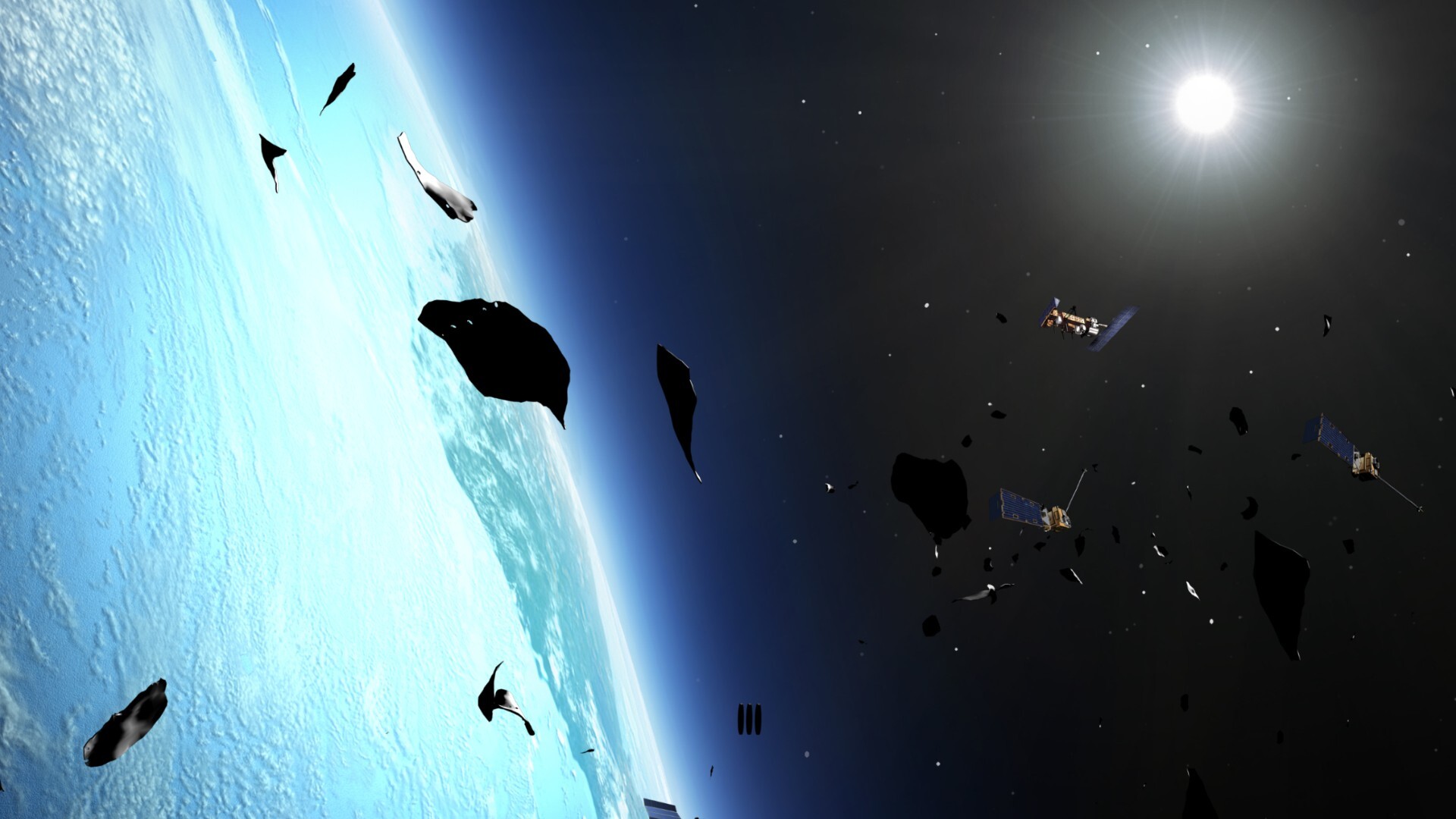Heavy Stellar Traffic Sends Dangerous Comets Our Way

Sixty-six million years ago Earth underwent a cataclysmic change. Back then, our planet was dominated by dinosaurs, but a mass extinction event hastened the demise of these huge reptiles and paved the way for the mammalian takeover. Though there is some debate as to whether the extinction of the dinosaurs was triggered by an isolated disaster or a series of disasters, one event is clear — Earth was hit by a massive comet or asteroid and its impact had global ramifications.
The leading theory is that a massive comet slammed into our planet, creating the vast Chicxulub Crater buried under the Yucatán Peninsula in Mexico, enshrouding the atmosphere in fine debris, blotting out the sun for years.
Although there is strong evidence of comet impacts on Earth, these deep space vagabonds are notoriously hard to track, let alone predict when or how often they may appear. All we know is that they are out there, there are more than we thought, they are known to hit planets in the solar system and they can wreak damage of apocalyptic proportions.
Now, using fresh observations from the European Space Agency's Gaia mission, astronomer Coryn Bailer-Jones, who works at the Max Planck Institute for Astronomy in Munich, Germany, has added an interesting component to our understanding of cometary behavior.
Stellar Traffic
Long-period comets are the most mysterious — and troubling — class of comet. They will often appear from nowhere, after falling from their distant gravitational perches, zoom through the inner solar system and disappear once more — often to be never seen again. Or they hit something on their way through. These icy bodies are the pristine left-overs of our solar system's formation five billion years ago, hurled far beyond the orbits of the planets and into a region called the Oort Cloud.
In the Oort Cloud these ancient masses have remained in relative calm far from the gravitational instabilities close to the sun. But over the eons, countless close approaches by other stars in our galactic neighborhood have occurred, causing very slight gravitational nudges to the Oort Cloud. Astronomers believe that such stellar encounters are responsible for knocking comets from this region, sending them on a roller-coaster ride to the inner solar system.
The Gaia mission is a space telescope tasked with precisely mapping the distribution and motion of stars in our galaxy, so Bailer-Jones has investigated the rate of stellar encounters with our solar system. Using information in Gaia's first data release (DR1), Bailer-Jones has published the first systematic estimate of stellar encounters — in other words, he's estimated the flow of stellar traffic in the solar system's neighborhood. And the traffic was found to be surprisingly heavy.
Breaking space news, the latest updates on rocket launches, skywatching events and more!
In his study, to be published in the journal Astronomy & Astrophysics, Bailer-Jones estimates that, on average, between 490 and 600 stars will come within 16.3 light-years (5 parsecs) of our sun and 19-24 of them will come within 3.26 light-years (1 parsec) every million years.
According to a press release, all of these stars will have some gravitational effect on the solar system's Oort Cloud, though the closest encounters will have a greater influence.
This first Gaia data release is valid for five million years into the past and into the future, but astronomers hope the next data release (DR2) will be able to estimate stellar traffic up to 25 million years into the past and future. To begin studying the stellar traffic that may have been responsible for destabilizing the dinosaur-killing comet that hit Earth 66 million years ago will require a better understanding of the mass distribution of our galaxy (and how it influences the motion of stars) — a long-term goal of the Gaia project.
An Early Warning?
Spinning this idea into the future, could this project be used to act as an early warning system? Or could it be used to predict when and where a long-period comet may appear in the sky?
In short: "No," Bailer-Jones told Astroengine via email. "Some close stellar encounters will for sure shake up the Oort cloud and fling comets into the inner solar system, but which comets on which orbits get flung in we cannot observe."
He argues that the probability of comets being gravitationally nudged can be modeled statistically, but this would require a lot of assumptions to be made about the Oort Cloud, a region of space that we know very little about.
Also, the Oort Cloud is located well beyond the sun's heliosphere and is thought to be between 50,000 and 200,000 AU (astronomical units, where 1 AU is the average distance between the sun and the Earth) away, so it would take a long time for comets to travel from this region, creating a long lag-time between stellar close approach and the comet making an appearance.
"Typically it takes a few million years for a comet to reach the inner solar system," he added, also pointing out that other factors can complicate calculations, such as Jupiter's enormous gravity that can deflect the passage of comets, or even fling them back out of the solar system again.
This is a fascinating study that goes to show that gravitational perturbations in the Oort Cloud are far from being rare events. A surprisingly strong flow of stellar traffic will constantly rattle otherwise inert comets, but how many are dislodged and sent on the long journey to the solar system's core remains a matter for statistics and probability.
Originally published on astroengine.com.
Ian O'Neill is a media relations specialist at NASA's Jet Propulsion Laboratory (JPL) in Southern California. Prior to joining JPL, he served as editor for the Astronomical Society of the Pacific‘s Mercury magazine and Mercury Online and contributed articles to a number of other publications, including Space.com, Space.com, Live Science, HISTORY.com, Scientific American. Ian holds a Ph.D in solar physics and a master's degree in planetary and space physics.

